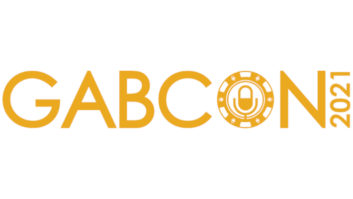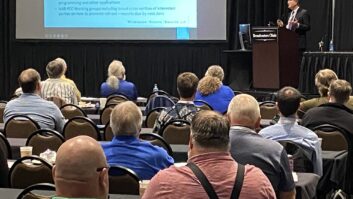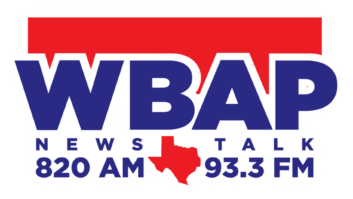WASHINGTON — Talk at the Federal Communications Commission about how to satisfy demand for wireless broadband has some broadcast organizations on alert for potential spectrum changes that could affect their operations someday.
Credit: Courtesy NPRSS

Earlier in 2017, a blog post by Commissioner Michael O’Rielly about repurposing parts of mid-band spectrum for next-generation wireless networks signaled to broadcasters that change was likely. A subsequent FCC Notice of Inquiry (GN Docket No. 17-183) in August spelled out the FCC’s intentions to seek potential opportunities for additional flexible access for wireless broadband services in spectrum bands between 3.7 and 24 GHz.
The FCC mentioned three bands in which it is specifically interested for wireless broadband services: 3.7–4.2 GHz, 5.925–6.425 GHz and 6.425–7.125 GHz. The commission believes those represent an appropriate starting point for inquiry into expanding access to mid-band spectrum for fixed and mobile wireless services.
“The commission believes that exploring options to expand access opportunities in mid-band frequencies could further our goal of establishing comprehensive, sound and flexible spectrum policies, enabling innovations and investment to keep pace with technological advances and maintaining U.S. leadership in deployment of next-generation services in the long term,” it wrote.
The commission also asked for comments about modifying or eliminating existing rules to allow for wireless services to share the spectrum.
Industry observers say broadcasters utilize 3.7 to 4.2 GHz for satellite C-Band downlinks while 6 GHz spectrum includes C-Band uplink. O’Rielly estimated in his blog post that there are 1,500 unique commercial C-Band earth station licenses in the United States; many in broadcasting consider that estimate low. They argue many more unregistered downlinks may be in use by radio and TV broadcasters, noting that registration isn’t required by the FCC, which also leaves them unprotected from interference.

C-Band dishes at NPR headquarters in Washington. The primary is at right, the backup at left, with NPR’s primary Ku-band dish between them.
The commission previously carved out more space for mobile broadband spectrum, a move that directly affected broadcasters, according to Chris Imlay, general counsel for the Society of Broadcast Engineers. He wrote about the topic in the October issue of the society’s newsletter: “The FCC has made its long-term strategy clear: As the demand for mobile services and products continues to increase, it is essential for the commission to continue making spectrum available.”
FCC Chairman Ajit Pai appears to be supportive of commission efforts to peel away at spectrum within the broadcasting realm to help satisfy appetite for wireless broadband. He released a statement with the FCC’s inquiry: “As the world goes wireless, [and] as consumers rely ever more heavily on their mobile devices, we need to keep up and that means in part looking at spectrum bands in the middle [bands] where the FCC historically hasn’t focused.”
A spokesperson for the FCC, in an email to Radio World, called it essential that the commission make available spectrum in the low-, mid- and high-frequency bands to support a diversity of applications and uses. The frequencies between 3.7 GHz and 24 GHz historically have not received as much attention in the context of mobile use as low-frequency spectrum below 3.7 GHz (e.g., the AWS-3 bands, 3.5 GHz) and high-frequency spectrum above 24 GHz (the Spectrum Frontiers bands), the official said.
“There is growing interest from industry and others for ‘mid-band’ spectrum between 3.7 GHz and 24 GHz. Mid-band spectrum offers a balance of coverage and capacity that could provide a critical input to operators to deploy new and improved wireless services. To evaluate whether such spectrum is available for wireless broadband use and explore options for making it available in the future, we believe it is time to explore the spectrum in the mid-bands.”
Joe Snelson, immediate past SBE president and an independent broadcast consultant, is worried that sharing mid-band spectrum will impact more than just C-Band satellite spectrum.
“The 6 GHz is where a lot of ENG stuff occurs. Mobile and temporary fixed operations for broadcasters. And 7 GHz is where all of the TV broadcasters have STLs and inter-city links. That band is also used by Part 101 users. So there is a lot of potential for interference issues that could be affected by this,” Snelson said.
Snelson is among those who believe the number of C-Band downlinks is being dramatically underestimated by the commission.
“There’s way more than 1,500, and those unregistered links will not be protected. Getting them registered requires a broadcaster going to a commercial frequency coordination company to get a study done. That study can protect you from new interference coming in. But it does cost money including the filing fee with the FCC,” he said.
Demand for wireless broadband spectrum won’t end anytime soon, Snelson said; and days of the FCC “pigeon-holing” spectrum to be used only for a fixed service or mobile are over; they’ll all be intertwined, and the question is how can that be done and how incumbents can be protected. “It will be a challenge,” Snelson said.
The National Association of Broadcasters urged caution in comments to the FCC, calling for protection of incumbent services.
“The FCC should require specific technical proposals for any expanded use of the band to allow stakeholders to provide technical analysis, and to ensure that any commission decision is based upon a sound engineering foundation,” it wrote.
Also, “the commission should not seek to fit a square peg into a round hole by allowing expanded operations that are technically incompatible with existing operations in a given band. Forcing fundamentally incompatible services to share spectrum band will only undermine the value of spectrum for those services by setting the stage for inevitable and harmful interference.”



Repointing and tending dishes for iHeartMedia are engineers Jacob Herslip in Dickinson, N.D., Tim Guentz in Sioux City, Iowa, and James Houghton in Wichita, Kan.
“IT’S A BIG DEAL”
One NAB official familiar with the issue said the C-Band is critical in delivering most network programming in this country for radio and TV. “Distributors of programming send out programming over the satellite links using C-Band spectrum. It’s a big deal and raises concerns about interference.”
The FCC’s solution could result in more people sharing the spectrum, he said, but technological incompatibility is a major hurdle.
“If they decide to mix mobile and fixed use, it could destroy the value of the spectrum. You have to figure out a way to protect fixed use if you allow mobile use. That means figuring out the separation mechanisms. For broadcasters there is no perfect substitute for C-Band. Fiber could be an option but it is super expensive and not available everywhere. It’s not always economical to build out fiber,” the NAB representative said.
Another scenario might see the FCC splitting up the spectrum piece by piece. “Maybe give 100 MHz for wireless use and the satellite guys keep 400 MHz,” he said.
National Public Radio wrote in its comments to the FCC that the push for terrestrial broadband will directly affect incumbent operators such as itself. The Public Radio Satellite System utilizes the C-Band to distribute programming to NPR and non-NPR radio stations and has 475 receive-only earth stations.
“NPR is concerned that additional terrestrial use spectrum between 3.7 and 4.2 GHz [C-Band], particularly for mobile broadband, would threaten the public’s access to public radio stations broadcasts,” NPR wrote. “The PRSS is completely dependent on extremely low-power satellite-to-earth-stations C-Band downlinks, which in turn, are particularly susceptible to interference. NPR has similar concerns about its corresponding uplink frequencies from 5.925 to 6.425 GHz.”
Likewise, comments by iHeartMedia underscore the concern of radio broadcasters, especially those that depend on the C-Band for reception of programming.
“Earth station reception from satellites is highly sensitive to interference, so that authorizing other services to install nearby transmission systems would likely create intolerable interference to established satellite reception,” the company told the FCC.
Premiere Networks, owned by iHeartMedia, distributes programming to its 5,000 radio affiliates via their receive-only earth stations operating in the 3.7-4.2 GHz portion of the mid-band.
Wireless carriers have been particularly active filing comments on the FCC’s mid-band inquiry. T-Mobile, Sprint, AT&T and Verizon all reiterated the importance of the FCC’s recent efforts to expand flexible access for wireless broadband services.
AT&T wrote, “Given the importance of spectrum as an input to the mobile broadband market, AT&T commends the FCC for undertaking to develop a spectrum pipeline capable of accommodating future demand. AT&T also believes that the Lower C-Band warrants further investigation and holds some promise for flexible use.”
But in reply comments in November, NPR said that many of the comments from wireless broadband advocates gloss over an irreducible fact: “Sharing C-band spectrum in a way that preserves incumbent uses like the public radio system is simply not possible with current technology.”
The NAB official called it unlikely that the wireless industry will ever stop clamoring for spectrum. “The FCC has done an excellent job satisfying them to this point, but the demand is increasing. At some point one would think there would be an adequate amount of spectrum out there.”
What next? The FCC would file a Notice of Proposed Rulemaking, if it decides to move ahead with a proposal, then collect more comments before making a final decision on the matter. Several observers said any final decision is “likely several years away.”
Comment on this or any story. Email[email protected].












